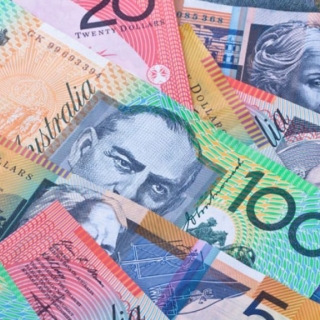


The Australian dollar strengthened to around US$0.65 on Wednesday, hitting a one-week high. This strengthening occurred after higher-than-expected inflation data came out, further convincing the market that the Reserve Bank of Australia (RBA) will remain hawkish and not ready to ease interest rates anytime soon.
The first full monthly inflation data showed that price pressures remain high. Headline inflation rose to 3.8% in October, the fastest pace in seven months and above market expectations. More importantly, trimmed mean inflation—the RBA's favorite measure of underlying price pressures—also rose to 3.3%, again exceeding expectations. Previously, very strong quarterly inflation releases had already prompted the RBA to maintain a tight interest rate.
From a fundamental perspective, RBA Assistant Governor Hunter last week assessed that the labor market remains "overheated," with unemployment declining and wage growth remaining strong. This condition confirms that policy tightening is still being felt and supports the central bank's cautious stance. In the market, the chances of an interest rate cut before May of next year are currently considered very slim, and some analysts even believe the easing cycle is over. (az)
Source: Newsmaker.id
The Australian dollar weakened against the US dollar on Monday (November 24th), ahead of the release of important inflation data due this week. The market is focusing on Australia's first "full" month...
The Australian dollar (AUD) moved steadily against the US dollar (USD) on Thursday following the People's Bank of China (PBOC) interest rate decision. The Chinese central bank held the Loan Prime Rate...
The Australian dollar fell to around $0.652 on Monday (November 17) after the US dollar strengthened sharply. The greenback's strengthening occurred because several Fed officials began to doubt the ne...
The Australian dollar held steady around $0.651 on Thursday, holding onto recent gains after the September trade surplus widened sharply to AUD 3.94 billion (vs. August's revised AUD 1.11 billion), be...
The Australian dollar weakened to around $0.647, hitting its lowest level in eleven weeks. This decline continued as risk-off sentiment in global markets intensified, overshadowing the Reserve Bank of...
The Australian dollar strengthened to around US$0.65 on Wednesday, hitting a one-week high. This strengthening occurred after higher-than-expected inflation data came out, further convincing the market that the Reserve Bank of Australia (RBA) will...
Hong Kong stocks rose again for a third straight day on Wednesday, approaching their longest winning streak in two weeks. The Hang Seng Index rose 0.6% to 26,039.99, supported by tech stocks such as Meituan, which surged 6.6% ahead of its earnings...
The Japanese yen held its recent advance to around 156 per dollar on Wednesday, hovering at one-week highs and benefiting mainly from dollar weakness as traders ramped up bets on a US Federal Reserve rate cut in December. Those expectations grew...
 European shares ended higher on Monday, boosted by technology-focused stocks as risk sentiment improved on growing expectations of a U.S. interest...
European shares ended higher on Monday, boosted by technology-focused stocks as risk sentiment improved on growing expectations of a U.S. interest...
 Asia-Pacific markets started the week with gains after New York Fed President John Williams signaled that a third interest rate cut is still...
Asia-Pacific markets started the week with gains after New York Fed President John Williams signaled that a third interest rate cut is still...
 U.S. President Donald Trump said fiscal revenue from his trade tariffs is set to "skyrocket" in the coming months as inventory levels among local...
U.S. President Donald Trump said fiscal revenue from his trade tariffs is set to "skyrocket" in the coming months as inventory levels among local...
 European stocks recovered in afternoon trading and closed slightly higher on Monday (November 24th), paring losses from the previous week thanks to...
European stocks recovered in afternoon trading and closed slightly higher on Monday (November 24th), paring losses from the previous week thanks to...